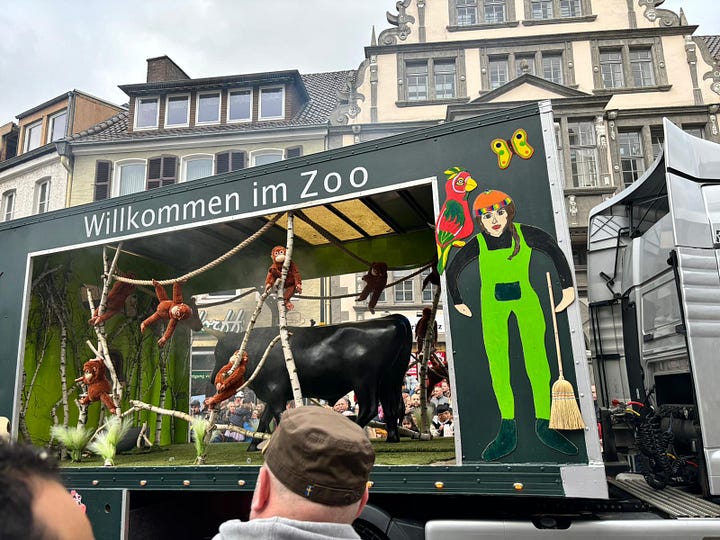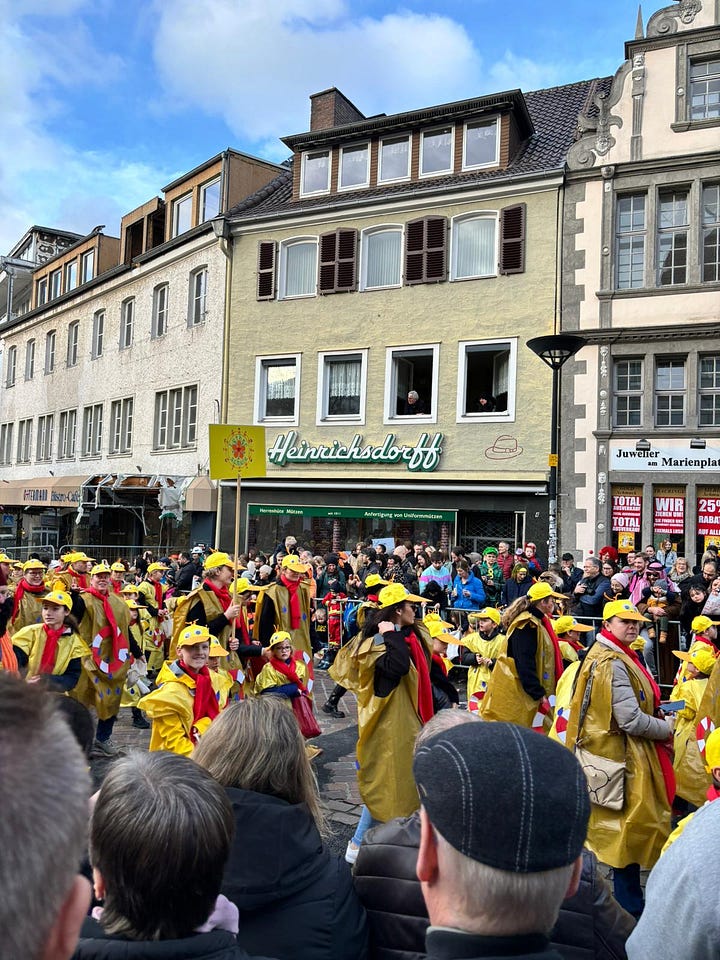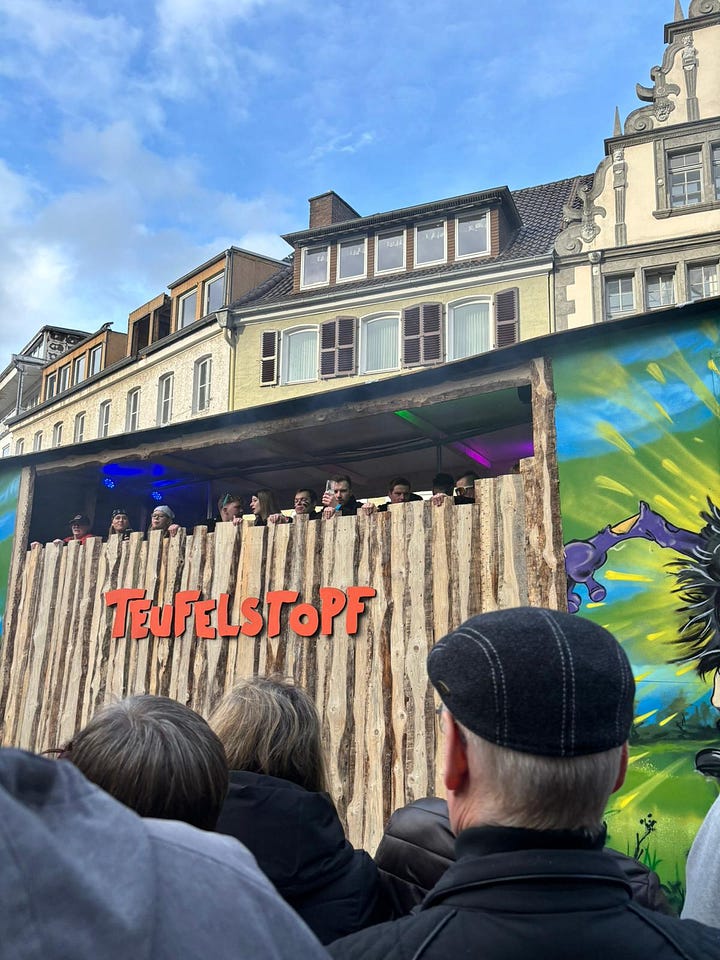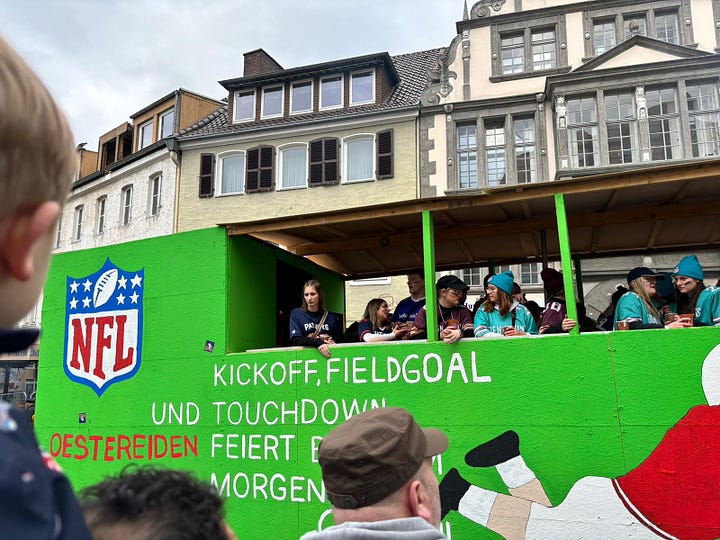When we decided to move to Paderborn last summer and started thinking about what cultural differences would stick out, Karneval was the first item on Domenik’s list. While Karneval might be a Germany-wide spectacle, the state of North Rhein Westfalia (NRW) where Paderborn is located is renowned for the celebration.
Karneval is one of those things that I could imagine but not quite grasp. Many countries with a historically Catholic population have their own version (think the raucous Mardi Gras of New Orleans, ornate carnevale of Venice, or the exuberant carnaval in Brazil). But in those cultures, carnival seems to fit culturally. It was hard for me to anticipate how chilly, reserved, efficient Germany could truly embrace the spirit of Karneval.
Leading up to the celebration, I would hear people joke that Karneval is just an excuse for Germans to drink beer in public during the day time and, while that might have been true for the parade participants, it seemed like the audience was relatively sober. And while I expected that going to a Karneval parade might feel a bit like a halloween parade, nothing prepared me for the floats.
In Paderborn’s Karneval parade [video], it felt like about half of the groups were pavilions perched on flatbeds, dragged by tractors through the city, filled with very drunk college-aged students all wearing coordinated costumes and singing at the top of their lungs to the music blaring from attached speakers, flinging hard candy in every direction, having the time of their lives.
Each group had a theme - some of the old classics like outer space, the jungle, under the seat, and so on. My personal favorite was the apres-ski-themed float, designed to look like an alpine ski lodge with the co-eds wearing coordinated 80s ski suits (you’ll have to believe me when I say that this was a lot less classy than it sounds). The real shocker for me was the NFL float (pictured) - a propos given that the parade preceded the super bowl by one day. Does the American entertainment empire know no bounds?




Every city with a healthy Karneval tradition in Germany does it their own way, especially when it comes to the battle cry used to whip up the crowds, called the Narrenruf (Narren refers to the jesters/fools/clowns that lead the parade, and Ruf means “call.”) [read more here]. Paderborn, being a historic city rife with Catholic tradition, has a unique Narrenruf: “Hasi Palau!” The paraders shout “Hasi!,” and the crowd must shout back “Palau!” Even if you speak German, this just sounds like a collection of syllables until you learn about the origins. Hasi refers to the famous three-rabbit window at the Cathedral of Paderborn (in German Hase means “hare” or “rabbit”), whereas Palau is said to be a mash up of the name Paderborn and Helau, an old shepherd’s call, and the battle cry heard in several other Karneval festivals around western Germany.
As it turns out, Karneval did manage to be both a raucous spectacle as well as a uniquely German festival. Between the crafty, homemade, and sometimes downright wacky costumes, beer-carrying uni students, and enormous pretzels being hawked for 3 EU each, there was no doubt we were in Germany. But it still had some of the flamboyance and let-loose nature that other carnival/fat Tuesday celebrations are famous for. Best of all, it was our first chance to see Paderborn’s population turn out together for some carefree fun.




So fun to learn about Karneval in Germany! Thanks for bringing us along! :)